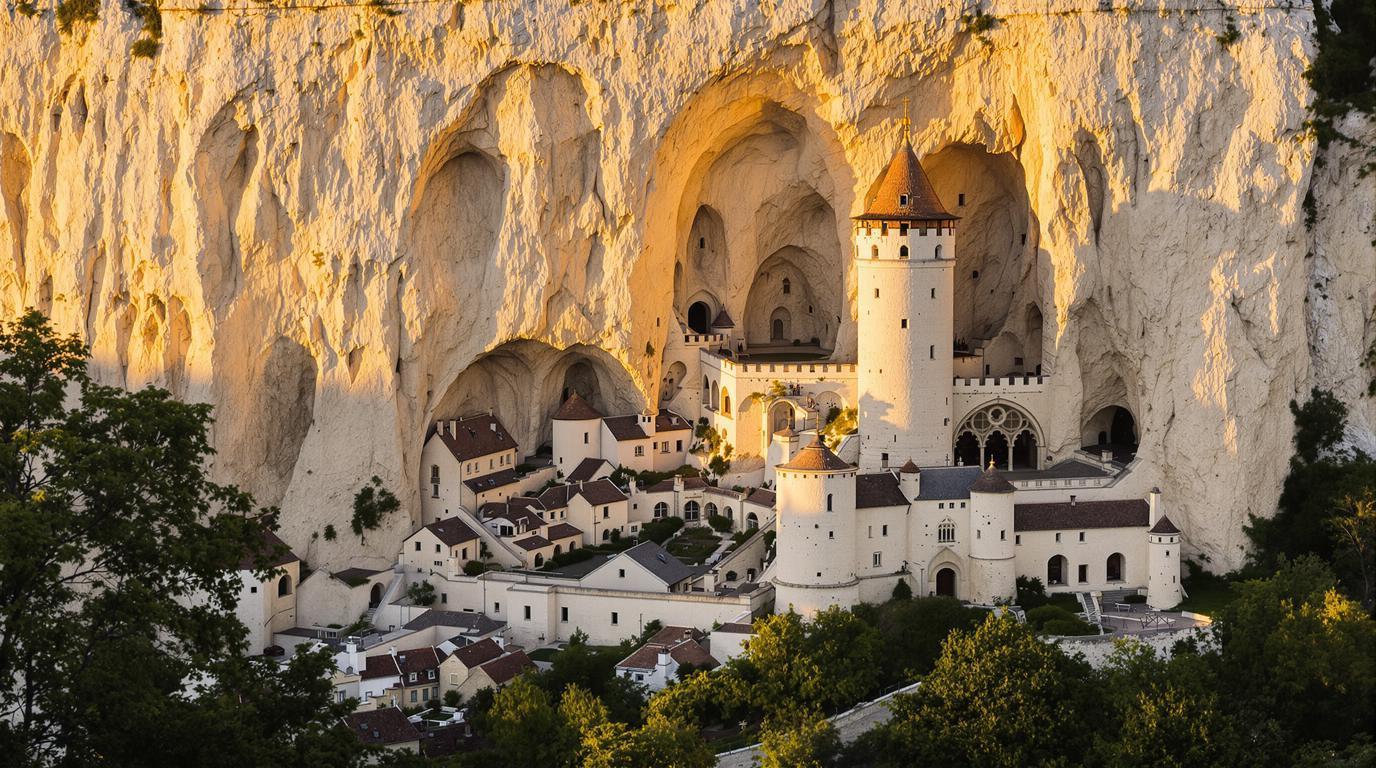Beyond the glittering lights of Paris lies a medieval treasure that even many French locals haven’t discovered. Perched dramatically on a chalk cliff overlooking the Seine River, La Roche-Guyon offers travelers a mesmerizing blend of history, architecture, and natural beauty that feels worlds away from tourist-packed European destinations.
A castle with 900 years of secrets carved into limestone
La Roche-Guyon’s crown jewel is its remarkable château, a structure that literally emerges from the white chalk cliff face. What makes this castle extraordinary isn’t just its age—dating back to the 12th century—but how it organically integrates with the natural landscape. A hidden staircase tunneled through solid rock connects the medieval donjon (keep) atop the cliff to the elegant Renaissance château below.
“This château tells the story of France through its stones,” explains local historian Marie Duval. “From medieval knights to WWII occupation, these walls have witnessed it all.”
Perhaps most fascinating is the castle’s dark chapter as Field Marshal Rommel’s headquarters during WWII, adding a layer of 20th-century significance to this ancient site that rivals other hidden French villages with military histories.
The village where time stands perfectly still
With fewer than 500 residents, La Roche-Guyon’s tiny center feels like stepping into a painting. The 15th-century Church of Saint-Samson anchors the village with its commanding presence, while narrow streets reveal homes built partially into the cliff—a unique architectural feature called troglodyte dwellings.
Unlike the limestone sanctuaries of England, these chalk formations create a distinctive milky-white backdrop that bathes the village in an ethereal glow during sunset.
A garden that would impress Marie Antoinette
Adjacent to the château lies a meticulously maintained potager (kitchen garden) designated as a “jardin remarquable” by the French government. This isn’t your typical flower display—it’s a living museum of traditional French gardening techniques featuring geometric herb beds, heritage vegetables, and fruit trees trained along ancient stone walls.
“Our garden represents centuries of agricultural knowledge,” says Claude Renoir, the garden’s caretaker. “We grow the same herbs and vegetables that once fed castle residents centuries ago.”
Like other hidden European treasures, La Roche-Guyon maintains a perfect harmony between nature and human habitation.
Riverside serenity that inspired artistic legends
The peaceful Seine riverfront has drawn creative minds for generations. Victor Hugo found inspiration here, as did Claude Monet, who lived nearby in Giverny. Today, visitors can walk the same riverbank paths, watching boats lazily drift by while the cliff face changes color with the shifting sunlight.
Unlike some island destinations with famous statues, La Roche-Guyon’s beauty is more subtle—a perfect canvas for photographers, especially during golden hour.
A culinary scene that rivals cities twice its size
Despite its diminutive population, La Roche-Guyon boasts surprisingly sophisticated dining options showcasing Norman and Île-de-France specialties. Local restaurants like Les Bords de Seine serve exquisite regional dishes using ingredients often sourced directly from the château’s potager garden.
“Our cuisine tells the story of this landscape,” explains Chef Pierre Lavigne of La Cancalaise. “The apples in your dessert grew just meters from where you’re sitting.”
While Persian sanctuaries might offer exotic flavors, La Roche-Guyon delivers the authentic taste of traditional French countryside cooking.
Visiting this hidden gem requires just a short detour from Paris, yet rewards travelers with an experience most tourists never discover. As you stand atop the château’s donjon, watching the Seine snake through the valley below while the afternoon sun illuminates centuries of history carved into white chalk, you’ll understand why this village deserves to be France’s best-kept secret.
